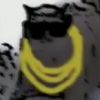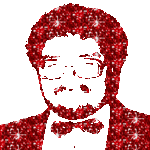www.skyandtelescope.org copy pastes.
Moderator: Community Team
Re: Astronomy!
I hardly go out but I did buy a magazine the other day that was talking about an "affordable" Orion telescope they liked. Then I saw a link for https://khanscope.com on friendface. ~sigh~
On Friday I got home after dark with my brother and we spotted Jupiter through the branches of the big tree and near a few street lights. It was still pretty bright so easy to spot.
Hope you're having a great week JP.
On Friday I got home after dark with my brother and we spotted Jupiter through the branches of the big tree and near a few street lights. It was still pretty bright so easy to spot.
Hope you're having a great week JP.
-

 2dimes
2dimes
- Posts: 13100
- Joined: Wed May 31, 2006 1:08 pm
- Location: Pepperoni Hug Spot.














Re: Astronomy!
I bought this https://www.skynews.ca at the grocery store. It has good pictures.
It's snowing right now so there won't be any star viewing tonight.
It's snowing right now so there won't be any star viewing tonight.
-

 2dimes
2dimes
- Posts: 13100
- Joined: Wed May 31, 2006 1:08 pm
- Location: Pepperoni Hug Spot.














Re: Astronomy!
Thanks for sharing, 2dimes.
Things are going well, but I am staying very busy. School in Session.
Mike JP4Fun
Things are going well, but I am staying very busy. School in Session.
Mike JP4Fun
2dimes wrote:I bought this https://www.skynews.ca at the grocery store. It has good pictures.
It's snowing right now so there won't be any star viewing tonight.
-

 jusplay4fun
jusplay4fun
- Posts: 8287
- Joined: Sun Jun 16, 2013 8:21 pm
- Location: Virginia






















Re: Astronomy!
I clearly saw Jupiter in the sky near the moon, on October 3.
https://www.skyandtelescope.com/observing/this-weeks-sky-at-a-glance-september-27-october-5/
JP4Fun
https://www.skyandtelescope.com/observing/this-weeks-sky-at-a-glance-september-27-october-5/
JP4Fun
-

 jusplay4fun
jusplay4fun
- Posts: 8287
- Joined: Sun Jun 16, 2013 8:21 pm
- Location: Virginia






















Re: Astronomy!
https://www.skyandtelescope.com/observi ... ovember-2/
Update for this week. Enjoy looking up at the heavens.
JP4Fun
Update for this week. Enjoy looking up at the heavens.
JP4Fun
-

 jusplay4fun
jusplay4fun
- Posts: 8287
- Joined: Sun Jun 16, 2013 8:21 pm
- Location: Virginia






















Re: Astronomy!
I sort of glanced at the crescent moon. It's kind of hazy out. Not too cold but definately not warm.
-

 2dimes
2dimes
- Posts: 13100
- Joined: Wed May 31, 2006 1:08 pm
- Location: Pepperoni Hug Spot.














Re: Astronomy!
We got up to near 80F today; Crazy warm, even for Eastern/Central Virginia, this late in October. We had a Squall Line of storms move through with high winds and a slight Tornado Risk. I Think we are now through the worst of it. BUT it will be colder and windy on Nov. 1.
It will get near freezing this upcoming week, so still warm. Normally we have had a frost by NOW, but NONE yet.
Bottom Line: TOO Cloudy NOW to see much in the night sky.
JP4Fun
It will get near freezing this upcoming week, so still warm. Normally we have had a frost by NOW, but NONE yet.
Bottom Line: TOO Cloudy NOW to see much in the night sky.
JP4Fun
2dimes wrote:I sort of glanced at the crescent moon. It's kind of hazy out. Not too cold but definately not warm.
-

 jusplay4fun
jusplay4fun
- Posts: 8287
- Joined: Sun Jun 16, 2013 8:21 pm
- Location: Virginia






















Re: Astronomy!
Wow, it was just above 32F at 2 degrees C. It snowed nice big flakes around noon then it just kind of cleared up until later.
I just went out to look for the moon and it's gone. I don't know if it's behind clouds or has set. Did not see stars, the street lights are pretty bright. They are fairly new LED units.
I just went out to look for the moon and it's gone. I don't know if it's behind clouds or has set. Did not see stars, the street lights are pretty bright. They are fairly new LED units.
-

 2dimes
2dimes
- Posts: 13100
- Joined: Wed May 31, 2006 1:08 pm
- Location: Pepperoni Hug Spot.














Re: Astronomy!
The webcam shows some stars at the observatory and not much cloud. Interesting.
https://cam01.sci.ucalgary.ca/AllSkyCam ... tImage.JPG
https://cam01.sci.ucalgary.ca/AllSkyCam ... tImage.JPG
-

 2dimes
2dimes
- Posts: 13100
- Joined: Wed May 31, 2006 1:08 pm
- Location: Pepperoni Hug Spot.














Re: Astronomy!
The evening sky looks more interesting, based on the graphics in the link for the upcoming week:
https://www.skyandtelescope.com/observing/this-weeks-sky-at-a-glance-november-8-16/
Enjoying viewing the sky, and for those of us in the North, Bundle Up.
JP4Fun
https://www.skyandtelescope.com/observing/this-weeks-sky-at-a-glance-november-8-16/
Enjoying viewing the sky, and for those of us in the North, Bundle Up.
JP4Fun
-

 jusplay4fun
jusplay4fun
- Posts: 8287
- Joined: Sun Jun 16, 2013 8:21 pm
- Location: Virginia






















Re: Astronomy!
Mercury Transit: Rare Event
The Science of the 2019 Mercury Transit: How Astronomers Will Study the Rare Celestial Event
https://www.space.com/mercury-transit-2019-science.html See some info from this Link below:
Also:
https://www.space.com/32806-why-mercury-transit-of-sun-rare-event.html
Mercury Transit of the Sun: Why Is It So Rare? Link is above
By Mike Wall May 06, 2016
JP4Fun
The Science of the 2019 Mercury Transit: How Astronomers Will Study the Rare Celestial Event
https://www.space.com/mercury-transit-2019-science.html See some info from this Link below:
On Monday (Nov.11), observers and scientists in North America will have their last opportunity to view a rare celestial event for three decades.
Mercury will cross in front of the sun, as seen from Earth, a process known as a transit. Although the last transit of Mercury occurred only three years ago, the next won't happen until 2032 and won't be visible from North America. These rare events provide the opportunity for scientists to gather both new scientific observations and re-creations of historical ones.
Also:
https://www.space.com/32806-why-mercury-transit-of-sun-rare-event.html
Mercury Transit of the Sun: Why Is It So Rare? Link is above
By Mike Wall May 06, 2016
JP4Fun
-

 jusplay4fun
jusplay4fun
- Posts: 8287
- Joined: Sun Jun 16, 2013 8:21 pm
- Location: Virginia






















Re: Astronomy!
A rare but spectacular 'unicorn' meteor storm is possible Thursday night (November 21, 2019)
Doyle Rice USA TODAY
https://www.usatoday.com/story/news/nation/2019/11/19/meteor-storm-possible-thursday-night/4240354002/ see below
A rare celestial treat awaits stargazers late Thursday evening as a full-fledged "unicorn" meteor storm could appear in the night sky, astronomers said.
Several meteors per minute are possible at the height of the storm, according to meteor scientists Esko Lyytinen and Peter Jenniskens.
There is no guarantee that such an event will unfold, but Lyytinen and Jenniskens said there is a "good chance" to see the first Alpha Monocerotids meteor storm since 1995, when there were about 400 meteors per hour, AccuWeather reported.
The meteor shower is known as the Alpha Monocerotids because the meteors radiate from Monoceros (Greek for "unicorn"), a faint constellation to the left of Orion, according to AccuWeather.
ALSO:
https://wjla.com/weather/stormwatch7-weather-blog/unicorm-meteor-shower see below:
The best viewing for this particular storm is forecast to be farther east of the east coast, actually in eastern South America and western Africa.
However, we still have a good shot!
Scientists recommend finding a spot away from light pollution and with a good view of the horizon to the southeast. The radiant of this shower will not be too far above the horizon during the quick peak.
Luckily, moonrise won't happen until closer to 3 a.m., so the moonlight will not drown out any meteors.
"Unlike most meteor outbursts, which last for several hours, strong activity from the Alpha Monocerotids is over within an hour and easily missed," the American Meteor Society said.
The outburst should reach its peak around 11:50 p.m. EST Thursday, according to the meteor society.
The Alpha Monocerotids, like all meteor showers, occur when the Earth passes through a field of debris left by an asteroid or comet. What's odd about this shower is that the comet is unknown.
If the comet's dust trail is small and dense, the resulting meteor shower "may result in hundreds, or perhaps even thousands, of meteors burning up in just minutes," the National Weather Service said.
"If this scenario happens, that meteor shower is referred to as a meteor storm," the weather service said.
The best viewing conditions for the meteor shower are probably across the western and north-central USA, where there are only patchy clouds in the forecast.
The moon will not rise until the early morning hours, meaning that the shower will not be bothered by what can be the biggest source of natural light pollution, AccuWeather said.
JP4Fun
Doyle Rice USA TODAY
https://www.usatoday.com/story/news/nation/2019/11/19/meteor-storm-possible-thursday-night/4240354002/ see below
A rare celestial treat awaits stargazers late Thursday evening as a full-fledged "unicorn" meteor storm could appear in the night sky, astronomers said.
Several meteors per minute are possible at the height of the storm, according to meteor scientists Esko Lyytinen and Peter Jenniskens.
There is no guarantee that such an event will unfold, but Lyytinen and Jenniskens said there is a "good chance" to see the first Alpha Monocerotids meteor storm since 1995, when there were about 400 meteors per hour, AccuWeather reported.
The meteor shower is known as the Alpha Monocerotids because the meteors radiate from Monoceros (Greek for "unicorn"), a faint constellation to the left of Orion, according to AccuWeather.
ALSO:
https://wjla.com/weather/stormwatch7-weather-blog/unicorm-meteor-shower see below:
The best viewing for this particular storm is forecast to be farther east of the east coast, actually in eastern South America and western Africa.
However, we still have a good shot!
Scientists recommend finding a spot away from light pollution and with a good view of the horizon to the southeast. The radiant of this shower will not be too far above the horizon during the quick peak.
Luckily, moonrise won't happen until closer to 3 a.m., so the moonlight will not drown out any meteors.
"Unlike most meteor outbursts, which last for several hours, strong activity from the Alpha Monocerotids is over within an hour and easily missed," the American Meteor Society said.
The outburst should reach its peak around 11:50 p.m. EST Thursday, according to the meteor society.
The Alpha Monocerotids, like all meteor showers, occur when the Earth passes through a field of debris left by an asteroid or comet. What's odd about this shower is that the comet is unknown.
If the comet's dust trail is small and dense, the resulting meteor shower "may result in hundreds, or perhaps even thousands, of meteors burning up in just minutes," the National Weather Service said.
"If this scenario happens, that meteor shower is referred to as a meteor storm," the weather service said.
The best viewing conditions for the meteor shower are probably across the western and north-central USA, where there are only patchy clouds in the forecast.
The moon will not rise until the early morning hours, meaning that the shower will not be bothered by what can be the biggest source of natural light pollution, AccuWeather said.
JP4Fun
-

 jusplay4fun
jusplay4fun
- Posts: 8287
- Joined: Sun Jun 16, 2013 8:21 pm
- Location: Virginia






















Re: Astronomy!
WoW...! I got BUSY and missed the convergence of Venus and Jupiter:
https://www.skyandtelescope.com/observing/this-weeks-sky-at-a-glance-november-22-30/
Keep looking at the sky and enjoy the view of heavenly bodies. What sights. It is still NOT too late; check out these planets.
And thanks to 2dimes for his encouragement to keep posting here; it is FUN...!
JP4Fun
https://www.skyandtelescope.com/observing/this-weeks-sky-at-a-glance-november-22-30/
Keep looking at the sky and enjoy the view of heavenly bodies. What sights. It is still NOT too late; check out these planets.
And thanks to 2dimes for his encouragement to keep posting here; it is FUN...!
JP4Fun
-

 jusplay4fun
jusplay4fun
- Posts: 8287
- Joined: Sun Jun 16, 2013 8:21 pm
- Location: Virginia






















Re: Astronomy!
Look for planets...:
https://www.skyandtelescope.com/observing/this-weeks-sky-at-a-glance-december-6-14/
Mike JP4Fun
https://www.skyandtelescope.com/observing/this-weeks-sky-at-a-glance-december-6-14/
Mike JP4Fun
-

 jusplay4fun
jusplay4fun
- Posts: 8287
- Joined: Sun Jun 16, 2013 8:21 pm
- Location: Virginia






















Re: Astronomy!
I'm not into astronomy myself, but "Today's featured pictured" on Wikipedia is that of the shadow of a black hole, thought it was worth sharing here:
https://en.wikipedia.org/wiki/File:Black_hole_-_Messier_87_crop_max_res.jpg
https://en.wikipedia.org/wiki/File:Black_hole_-_Messier_87_crop_max_res.jpg
Wikipedia wrote:A black hole is a region of spacetime exhibiting gravitational acceleration so strong that nothing – no particles or even electromagnetic radiation such as light – can escape from it. The theory of general relativity predicts that a sufficiently compact mass can deform spacetime to form a black hole. The boundary of the region from which no escape is possible is called the event horizon. Although the event horizon has an enormous effect on the fate and circumstances of an object crossing it, no locally detectable features appear to be observed.
This picture is a photograph of the shadow of the supermassive black hole at the centre of the Messier 87 (M87) elliptical galaxy in the constellation Virgo, as captured on 11 April 2017 by the Event Horizon Telescope, a planet-scale array of eight ground-based radio telescopes, a collaborative effort by scientists from over 20 countries; the photograph itself was released on 10 April 2019. As a black hole is a completely dark object from which no light escapes, its shadow is the next best alternative to an image of the black hole itself. The event horizon, from which the telescope takes its name, is around 2.5 times smaller than the shadow it casts and measures just under 40 billion kilometres (25 billion miles) across.
- Attachments
-
- ad.png (81.87 KiB) Viewed 12443 times
-

 Maxleod
Maxleod
- Posts: 585
- Joined: Wed Nov 04, 2015 7:08 am
- Location: DARDIS (Drunkness And Relative Dimensions In Sleep)























Re: Astronomy!
Thanks for sharing, Max; I think this is a great place to share it.
JP4Fun
JP4Fun
Maxleod wrote:I'm not into astronomy myself, but "Today's featured pictured" on Wikipedia is that of the shadow of a black hole, thought it was worth sharing here:
https://en.wikipedia.org/wiki/File:Black_hole_-_Messier_87_crop_max_res.jpgWikipedia wrote:A black hole is a region of spacetime exhibiting gravitational acceleration so strong that nothing – no particles or even electromagnetic radiation such as light – can escape from it. The theory of general relativity predicts that a sufficiently compact mass can deform spacetime to form a black hole. The boundary of the region from which no escape is possible is called the event horizon. Although the event horizon has an enormous effect on the fate and circumstances of an object crossing it, no locally detectable features appear to be observed.
This picture is a photograph of the shadow of the supermassive black hole at the centre of the Messier 87 (M87) elliptical galaxy in the constellation Virgo, as captured on 11 April 2017 by the Event Horizon Telescope, a planet-scale array of eight ground-based radio telescopes, a collaborative effort by scientists from over 20 countries; the photograph itself was released on 10 April 2019. As a black hole is a completely dark object from which no light escapes, its shadow is the next best alternative to an image of the black hole itself. The event horizon, from which the telescope takes its name, is around 2.5 times smaller than the shadow it casts and measures just under 40 billion kilometres (25 billion miles) across.
-

 jusplay4fun
jusplay4fun
- Posts: 8287
- Joined: Sun Jun 16, 2013 8:21 pm
- Location: Virginia






















Re: Astronomy!
░▒▒▓▓▓▒▒░
-

 DoomYoshi
DoomYoshi
- Posts: 10728
- Joined: Tue Nov 16, 2010 9:30 pm
- Location: Niu York, Ukraine



























Re: Astronomy!
I just discovered that at the local brewery at my new address they have an astronomy lecture once a month.
instagram.com/garethjohnjoneswrites
-

 jonesthecurl
jonesthecurl
- Posts: 4616
- Joined: Sun Mar 16, 2008 9:42 am
- Location: disused action figure warehouse




















Re: Astronomy!
What do they call it? Suds and Sky? See stars and suds? JUS wondering....! 
Have you been?
JP4Fun
Have you been?
JP4Fun
jonesthecurl wrote:I just discovered that at the local brewery at my new address they have an astronomy lecture once a month.
-

 jusplay4fun
jusplay4fun
- Posts: 8287
- Joined: Sun Jun 16, 2013 8:21 pm
- Location: Virginia






















Re: Astronomy!
jusplay4fun wrote:What do they call it? Suds and Sky? See stars and suds? JUS wondering....!
Have you been?
JP4Funjonesthecurl wrote:I just discovered that at the local brewery at my new address they have an astronomy lecture once a month.
I haven't been yet -just moved in amd there was no December session.
https://www.sudwerkbrew.com/upcoming-onsite.html
instagram.com/garethjohnjoneswrites
-

 jonesthecurl
jonesthecurl
- Posts: 4616
- Joined: Sun Mar 16, 2008 9:42 am
- Location: disused action figure warehouse




















Re: Astronomy!
jonesthecurl wrote:jusplay4fun wrote:What do they call it? Suds and Sky? See stars and suds? JUS wondering....!
Have you been?
JP4Funjonesthecurl wrote:I just discovered that at the local brewery at my new address they have an astronomy lecture once a month.
I haven't been yet -just moved in amd there was no December session.
https://www.sudwerkbrew.com/upcoming-onsite.html
Just discovered that they also sometimes do comedy nights...
instagram.com/garethjohnjoneswrites
-

 jonesthecurl
jonesthecurl
- Posts: 4616
- Joined: Sun Mar 16, 2008 9:42 am
- Location: disused action figure warehouse




















Re: Astronomy!
Enjoy..!
JP4Fun
JP4Fun
-

 jusplay4fun
jusplay4fun
- Posts: 8287
- Joined: Sun Jun 16, 2013 8:21 pm
- Location: Virginia






















Re: Astronomy!
jonesthecurl wrote:I just discovered that at the local brewery at my new address they have an astronomy lecture once a month.
Now that is heaven. I am sure that there are some astronomers out there who are pissed. Probably the same ones who hated Sagan for discovering you can make real money in astronomy.
(I spent my college days trying to blend the instant coco into regular coffee for maximum flavor.)

-

 tzor
tzor
- Posts: 4076
- Joined: Thu Feb 22, 2007 9:43 pm
- Location: Long Island, NY, USA



















Who is online
Users browsing this forum: No registered users


